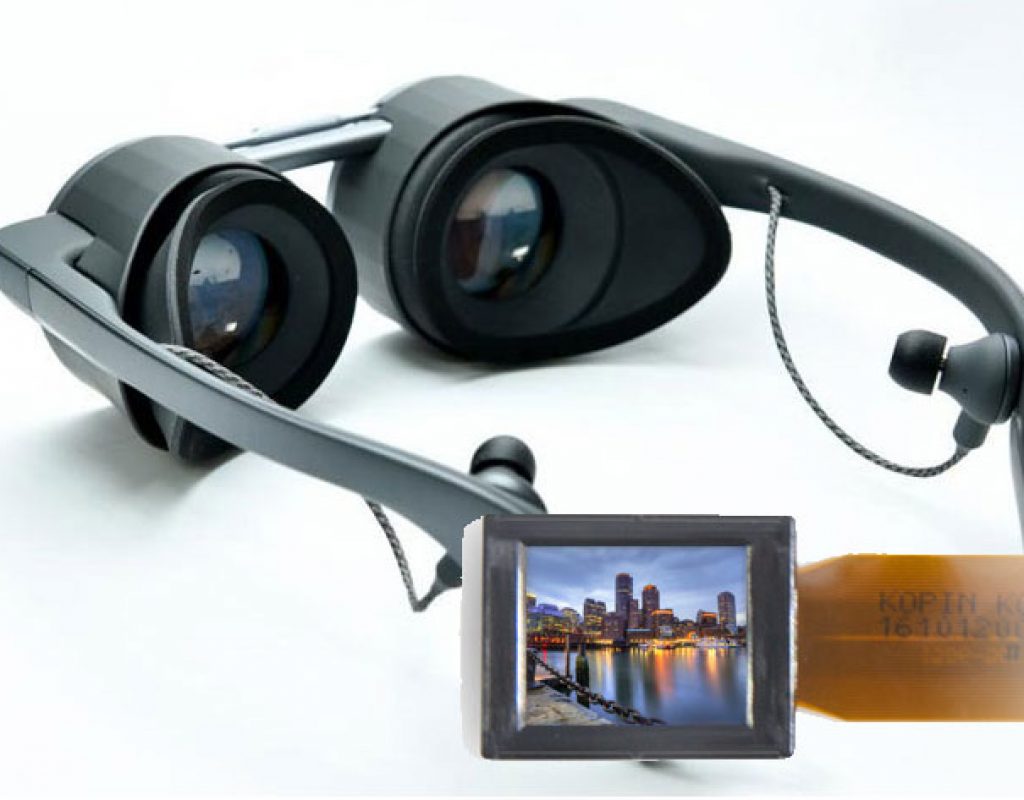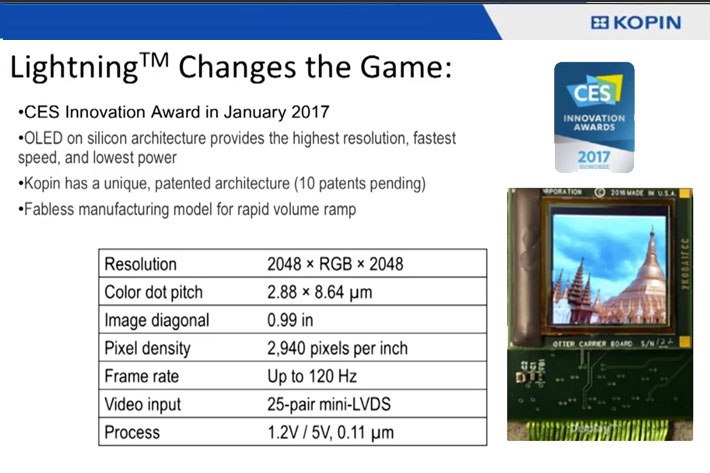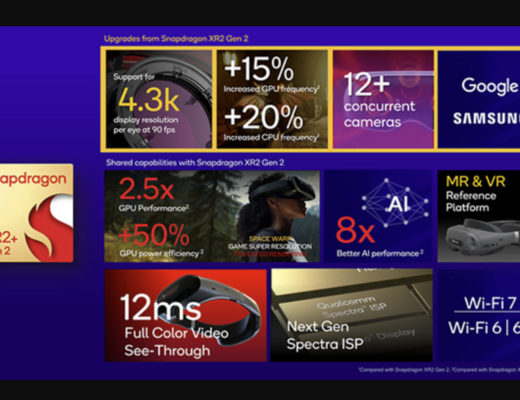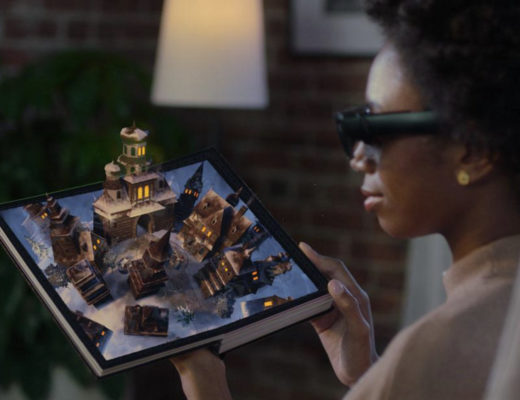
The world’s first 1.3″ 2.6K OLED display, with a resolution of 2560 x 2560 is on preview at CES 2020, courtesy of Kopin, and its announcement paves the way for next-generation AR, VR, and XR applications.
Developed to use the power of the the fifth generation (5G) mobile communications system, which will allow a number of new services using VR glasses to be offered, as we noted in our previous article about the VR eyeglasses announced at CES 2020 by Panasonic, the new VR solution, still presented as a reference product, is based on a 2.6k display that is the result of cooperation between Panasonic, Kopin Corporation and Lakeside Optoelectronic Technology Co., Ltd..
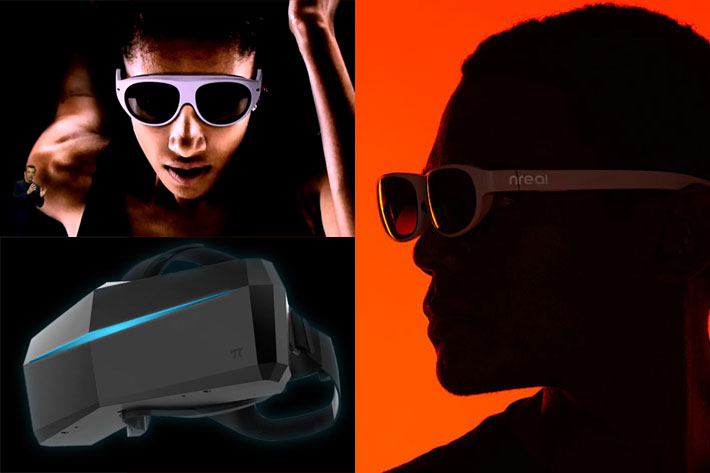 Although a series of new VR and AR solutions were on show at this CES 2020, from the Pimax Artisan for VR to nReal Light or Samsung’s AR glasses, the offer from Panasonic’s fits in a different category, because it’s a VR system looking as the AR solutions easily available. This is due, no doubt, to the type of display used, which allowed the design presented by Panasonic during its conference at CES 2020. For a similar solution, check the Huawei VR Glass, an IMAX certified headset for video and games, which we mentioned before here at PVC.
Although a series of new VR and AR solutions were on show at this CES 2020, from the Pimax Artisan for VR to nReal Light or Samsung’s AR glasses, the offer from Panasonic’s fits in a different category, because it’s a VR system looking as the AR solutions easily available. This is due, no doubt, to the type of display used, which allowed the design presented by Panasonic during its conference at CES 2020. For a similar solution, check the Huawei VR Glass, an IMAX certified headset for video and games, which we mentioned before here at PVC.
To better understand what makes the world’s first HDR capable UHD VR eyeglasses so special, one has to see what Kopin Corporation is showing during CES 2020. The company, a leading developer of transmissive and reflective active matrix liquid crystal and organic light emitting diode (OLED) microdisplays, demonstrates at the Las Vegas event the latest advances in its Lightning OLED microdisplay line-up. The demonstration include Kopin’s new double-stack OLED technology for much higher brightness and longer lifetime, 2k and 720p displays, and a preview of the new 1.3” 2.6k x 2.6k display (2560 x 2560 resolution) for next-generation AR, VR, and XR applications.
The UHD display developed with Panasonic
The 1.3” 2.6k x 2.6k display (2560 x 2560 resolution) is the most exciting of the products on show, because it is the one develop with Panasonic, a clear indication that this is the display that will be used in the reference product unveiled by the company. Featuring a Double-Stack OLED structure, it offers a resolution of 2560 x 2560 in a 1.3” diagonal size, making it the largest color micro OLED in the world, along with offering the highest resolution.
According to the information provided by Kopin, the display also integrates a high-speed CPHY/DPHY MIPI interface and has 10-bit color control for high dynamic range (HDR) control. With a double-stack OLED structure, the 2.6k full-color display exhibits brightness higher than 1000 nits, contrast ratio of more than 10,000: 1 and high color fidelity (NTSC 70%). Kopin also has two other displays on show:
2K Color Display with Double-Stack OLED Structure: With a resolution of 2048 x 2048 in a 0.99” diagonal size and adopting a double-stack OLED structure, the 2k display exhibits brightness higher than 1000 nits, contrast ratio of more than 10,000: 1 and high color fidelity (NTSC 70%). Able to operate up to 120 Hz with low power consumption, which was, as the other features firsts for the VR industry, the display received a 2017 CES Innovation Award.
High-Brightness Green 720p Display with Double-Stack OLED Structure: 720p OLED microdisplay with a 1280 x 720 resolution in a 0.49-inch diagonal size exhibits ultra-high brightness at more than 20,000 nits with very low OLED power consumption of only 130 mW.
VR solutions for the real-world consumer
Kopin’s new technical advances include its patent-pending silicon backplane technology which enables the creation of double-stack OLED structures for microdisplays. A double-stack OLED is two OLED structures connected in series so that carriers (electrons-holes) pass through the double-stack OLED and generate photons twice, instead of once in a conventional single-stack OELD structure. This results in much higher efficiency, higher brightness, lower power consumption and longer lifetime. Combined with patented backplane design architecture for lower power consumption and faster frame rate, Kopin’s Lightning Silicon wafers enable OLED microdisplays to meet the needs of real-world consumer and enterprise applications.
https://youtu.be/Dzh1lG7GnCc
“To date the applications for OLED microdisplays have been limited by the performance and the supply constraints, but we believe Kopin’s Lightning backplane technology and the emergence of high-volume OLED manufacturing facilities is going to greatly expand the applications for OLED microdisplays,” said Dr. John C.C. Fan, CEO of Kopin. “The double-stack OLED microdisplays have exhibited far superior performance already and we believe they will improve further as the technology matures. Our patent-pending backplane wafer technology is critical for us to create the double-stack structure necessary for high performance. We believe the partitioning of the OLED manufacturing into multiple parties, each focusing on their core competencies, will make a huge difference in the OLED microdisplay performance and supply chain.”
 The ultimate immersive experience
The ultimate immersive experience
“For wearable applications, especially for AR, super high brightness (up to 5000 nits) color OLED microdisplays have been the “dream” displays. This is many times brighter than current micro OLED displays. To achieve this high brightness, we believe one must transition from a single stack to a double stack OLED structure. The double stack structure should provide up to approximately 2500 nits with some additional optimization, and by combining it with micro lens technology, we expect to reach the target brightness of 5000 nits in the not too distant future,” said Dr. Boryeu Tsaur, Kopin’s OLED product head.
The introduction of this type of display will not only allow to change the design of VR headsets, which may well look like the VR eyeglasses unveiled by Panasonic, but will also help to push AR solutions forward, as they open new horizons in terms of what is possible. While there are many questions that have no answer yet, from price to how the whole system will work, Panasonic seems to know the end goal for the devices, if and when they reach the market. One just has to read the words from the company:
“The ultimate immersive experience while gaming or in your personal theater with ultra-high quality visual and audio on these small, lightweight VR Glasses with stylish design featuring Panasonic’s HDR image processing and optical technology.”

Filmtools
Filmmakers go-to destination for pre-production, production & post production equipment!
Shop Now